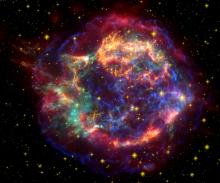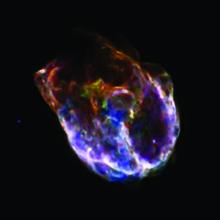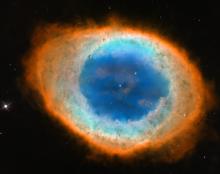Listen to today's episode of StarDate on the web the same day it airs in high-quality streaming audio without any extra ads or announcements. Choose a $8 one-month pass, or listen every day for a year for just $30.
You are here
Magnetic Merger
The merger of two neutron stars produces quite the fireworks. It creates most of the gold, silver, uranium, and certain other heavy elements in the universe. It causes space and time to “jiggle.” And it usually results in the birth of a black hole. But a merger seen last spring may have created something just as exotic: a magnetar.
A neutron star is the corpse of an exploded star. It’s more massive than the Sun, but only the size of a small city. A magnetar is a neutron star with an ultra-powerful magnetic field — a trillion or more times the strength of Earth’s magnetic field.
On May 22nd, space telescopes detected a brilliant outburst from a galaxy at the southwestern corner of Pisces, which is disappearing in the evening twilight now. The galaxy is more than five billion light-years away. The burst lasted just half a second. Yet it carried more energy than the Sun will produce in its entire 10-billion-year lifetime.
From the details of the outburst, astronomers concluded that it was produced by the merger of two neutron stars. Yet the afterglow was too bright to come from a black hole. That suggests the merger created a magnetar.
Astronomers aren’t certain that that’s what happened. But if it is, the magnetar should produce a lot of radio waves in anywhere from a few months to a few years. So they’ll aim their radio telescopes its way to try to confirm the birth of a magnetar.
More about magnetars tomorrow.






